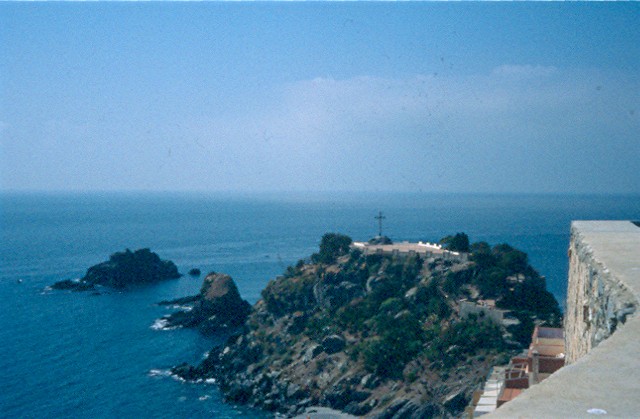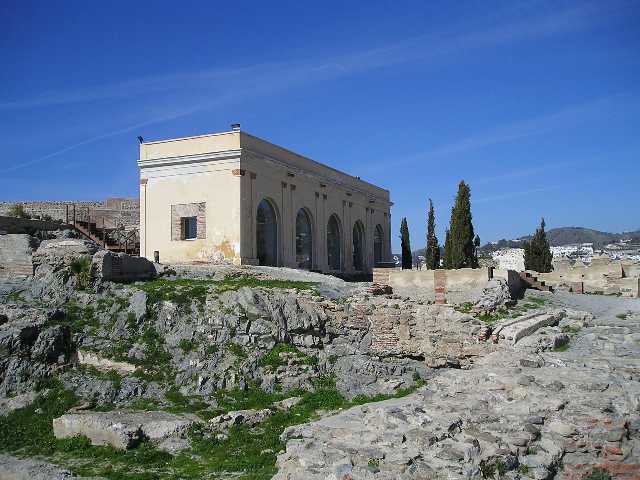The Castle of San Miguel
has its origins much earlier than the Christian
re-conquest. The site was certainly defended by
the Romans who built a bridge from the Castle across
to the 'Peñon del Santo' with a massive
100ft arch that survived until at least 1800. Later the Moors
built it up extensivly, with a palace complete with a bath house and
very well used dungeons. It was rebuilt and heavily
fortified by the Christian King Charles III and last defended (by the
French) in the Napolionic Wars.

Just this one tower was partly destroyed and also most of the internal buildings. Local tradition claimed that "the British did it". A Spanish historian recently visited Greenwich and Kew to discover the truth that a British party from HMS Hyacinth acting in collusion with Spanish partisans from Nerja on 27th May 1812 drove the French garrison out in disarray and then attempted to render the castle undefendable but with little success - owing to the gunpowder being damp! However, the Castle was finished as a military stronghold and following a cholera outbreak in 1830 the castle became the town cemetery, from which use it was cleared in 1986, to permit a restoration which is still in progress. Almuñécar was last attacked from the sea in 1936 by the Spanish Republican Navy but they were more concerned with destroying the sugar cane refinery on Playa San Cristóbel.
A view of the town beach and site of
the former port.

'Peñon del Santo' viewed from the Castle. The Romans built a bridge from the castle to
this rock and plans of the castle drawn up in 1800 show it as still standing.

Photographs © 2006 by Noel Walley
Email: Webmaster

'Peñon del Santo' viewed from the Castle. The Romans built a bridge from the castle to
this rock and plans of the castle drawn up in 1800 show it as still standing.
Above the late 16th Century military
block was possibly built to impress visiting Christian grandees.

It is now used to accommodate part of the town museum.
Visit
Llandudno - Queen of Welsh ResortsIt is now used to accommodate part of the town museum.
Photographs © 2006 by Noel Walley
Email: Webmaster